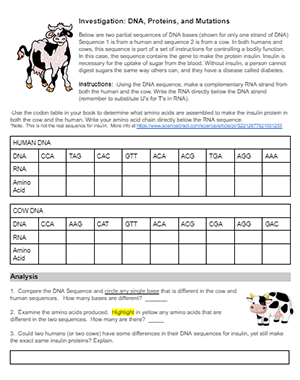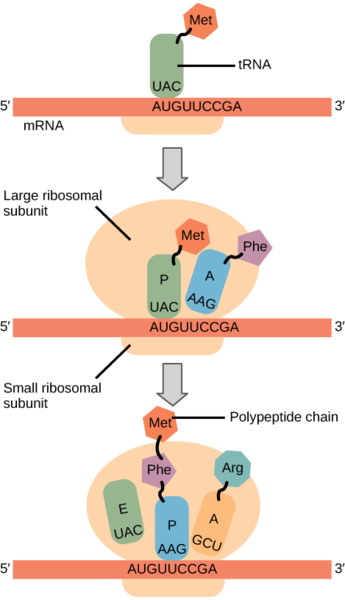
In this activity, students practice using codon charts to determine the amino acid chain of a sequence of DNA. In the first step, the DNA is transcribed to mRNA, and then mRNA is translated to amino acids using a codon chart. Students then examine the sequences to determine how changes in a single base can cause a change in the protein.
The exercise details how different mutations can affect the outcome. For example, a change in an insulin protein could result in a person having diabetes.
Further examples are highlighted. Sickle cell anemia is the result of a single point mutation which alters the shape of the blood cell. Cystic fibrosis is the result of a frameshift mutation, which can change multiple amino acids in the change because the reading frame shifts. Each amino acid after that shift is different from the original chain.
In Duchenne muscular dystrophy, a point mutation results in a stop codon, otherwise known as a “nonsense” mutation. This shortens the protein chain causing a problem with a person’s muscles.

The Central Dogma
I designed this activity for first level biology students. My advanced (AP) course goes into much more detail with cystic fibrosis mutations. There are actually several, which result in varying degrees of protein malfunction. Advanced students will already have a background in DNA mutations as well as protein folding and cell membranes.
On the last page, students synthesize what they have learned about DNA, genes, and proteins (The Central Dogma) and summarize each type of mutation. They construct an explanation based on evidence for how the structure of DNA determines the structure of proteins which carry out the essential functions of life through systems of specialized cells. ( HS-LS1-1 ).
I do have a simpler activity which focuses only on sickle cell anemia and point mutations. This activity is shorter and may be more appropriate for intro – level biology.

